I sent a picture of this newly created beast to some good buddies and cousin Luke’s response was “Red red red red red red red redneck”. Maybe so, but that’s seldom discouraged me in the past!
This project is something I’ve wanted to do for a long time, but with kids, work and everything else in life this project always got pushed to the back burner. Anyway I finally cleared my plate enough to get my arms around this endeavor, and the more I got into it the more I realized there’s much more to a lighted bowfishing boat than just strapping a couple lights onto the bow and running some wire. So much so that I had to break it into digestible chucks otherwise I was just spinning my wheels. I thought I’d do my best to capture what I learned while it’s still fresh in hopes it’ll help someone else.
I do have to give the folks at Bowfishing Country a ton of credit for all the help on their site and I’ll share some of the most helpful links below.
The Deck– Arguably the most important feature of a bowfishing boat is an elevated shooting platform.
Some of the primary considerations were weight, size, shape, height and rail. Because this boat is such a tank (technically they were used during World War II as temporary floating bridges or floating half-pontoons) it was the perfect platform to build on because of the flat bottom construction it can draft in about 6” of water while providing a super stable platform.
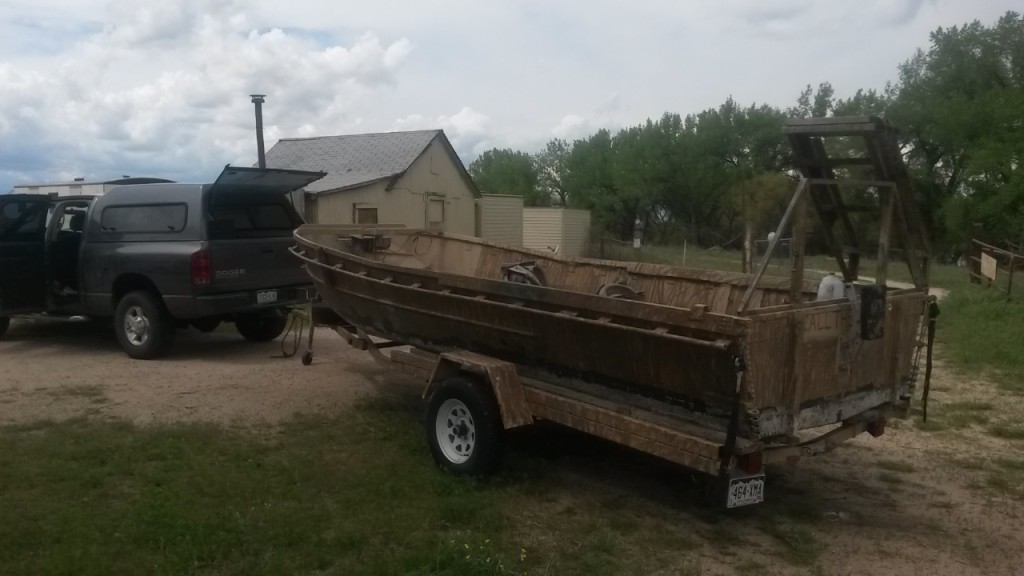
For the deck framing we went back and forth between aluminum and steel construction. Obviously aluminum is the preferred material for boat construction as it’s much lighter than steel. But the intricacies of welding aluminum were something we didn’t have a lot of experience with, so after much debate we decided that with such a stout platform weight wouldn’t be a huge issue in our situation.
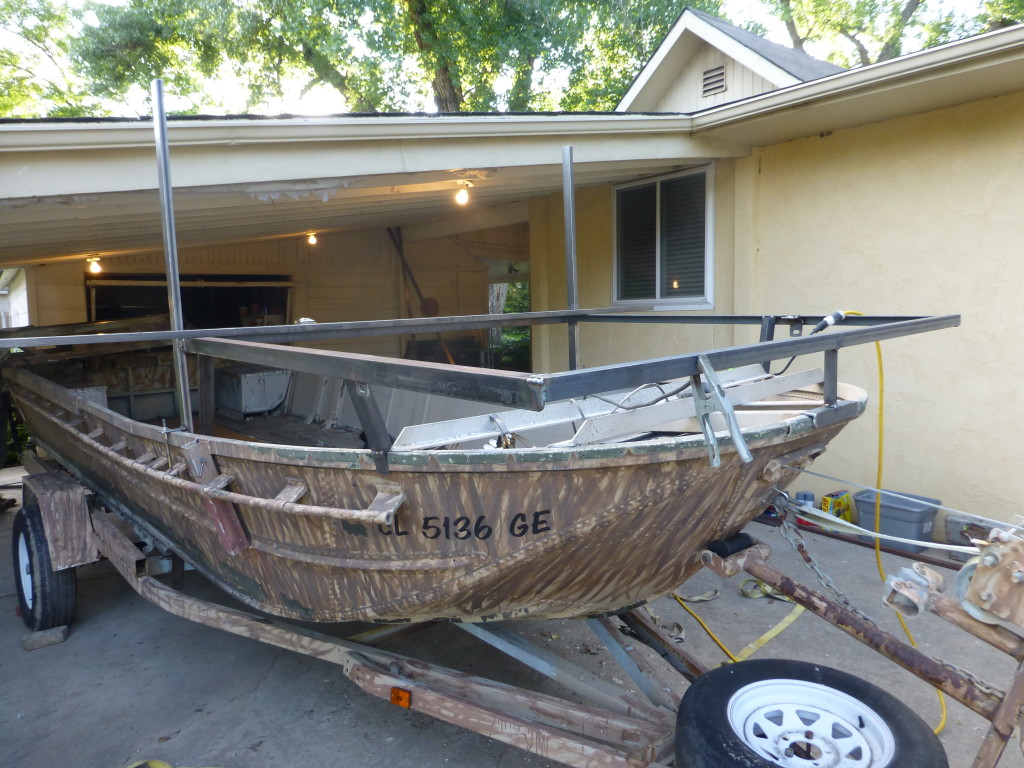
At the start of the project we considered a more tapered design vs. the square deck we ended up with, but ultimately we decided our fabrication skills weren’t going to win us any awards so we stuck with the simpler layout. The reason we considered the tapered front end was to help navigating where there’s a lot of brush or downed timber as a cleaner front end would be less likely to get hung up on brush.
We also decided to use plywood vs. aluminum for the actual decking, mainly because I was too impatient to round up some aluminum. I may end up regretting this since the entire platform is intended to be removed each fall so this boat can get restored to its primary use as a duck boat and the ¾” ply definitely added some unnecessary weight. The deck was painted with a deck restore product by Rustoleum Deck and Concrete Restore to help give it some traction and protect it from the elements (you might be a redneck if you’re more concerned about the finish of the deck on your bowfishing boat while your house deck is falling apart!) Overall I was pretty happy with the end result.
We decided to elevate the shooting platform about 8” above the gunnels for a couple reasons. The elevated platform lets you see a whole lot better and makes shooting a bit easier as there’s not as much refraction (the reason you have to aim below what appears to be your target as water “bends” light) at a steeper shooting angle. It also let us mount the lights beneath the deck hoping to keep bugs down slightly. We placed the rail about 16″ above the deck, I’d recommend testing out your particular bow to help determine your rail height. While some prefer no rail, I think it adds a bit of security while standing up front.
Lights
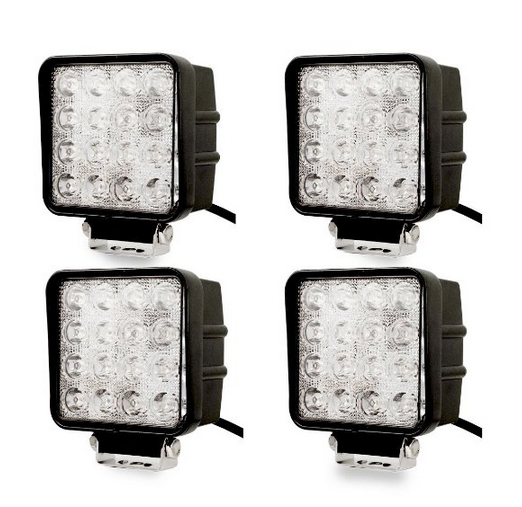
There are multiple choices when it comes to lights, whether it’s high pressure sodium, LED’s, halogens or metal halides. The two most popular being HPS of LED. When shopping for lights there are also voltage considerations: 12 volts, 24 volts or 120 volts. I chose to go with LED’s off Amazon (12) 48-watt lights. I liked the LED route because you get a lot more lumens per watt of input. We can also run in stealth mode strictly operating off the battery, or if we’re out for an extended period they’ll help keep our generator sizing down. Whichever route you decide to go, the lights and wiring can get to be a bit complicated if low voltage wiring isn’t something you do a lot of. A couple of the big name brand light manufacturers in the bowfishing world are Custom Fitz and Seelite and I may be looking for an upgrade from one of these guys in the near future.
Wiring
One of the biggest things to keep in mind whenever making your wiring decisions is OHM’s law. For those that forgot, volts x amps = watts. If you haven’t done much algebra lately you can manipulate this equation to solve for whichever variable you’re looking for, this becomes important when you’re trying to determine wire size.
amps = watts / volts
or
volts = watts / amps
The reason you may want to consider operating at 24-volt vs. 12-volt is because at higher voltages you can safely push more electrons through a smaller wire. For instance, knowing that I had 48-watt lights which could operate at either 12 or 24-volts the equation looked like this (48-watt/12-volts)=Amps or 4.0 amp, or conversely at 24-volts I’d have (48-watts/24-volts)=Amps or 2.0 amp. This is important because we’ll reference the tables below to determine wire size. This is also the reason our high-voltage power lines serving our electrical grid are “high-voltage” it keeps wire size to a minimum as the power to pushed over long distances.
Here’s another great reference for all your wiring questions (again from the folks at Bowfishing Country – Misc Wiring Info, Charts and Numbers)
I was caught off guard by how quickly you’ll find yourself into large gauge wires when working with 12 or 24-volt systems. I’m use to residential wiring where you can pick up a significant load with a 14 gauge wire (typically a 20-amp circuit), not so much when you’re only pushing it with 12-volts. I would also recommend protecting your circuits with a circuit breaker. For my setup, I used a 50-amp re-settable circuit breaker, which I inadvertently tested out when I first hooked up batteries without having all the wires properly protected and ending up shorting out the circuit. Luckily this only resulted in the breaker being tripped vs. a damaged device.
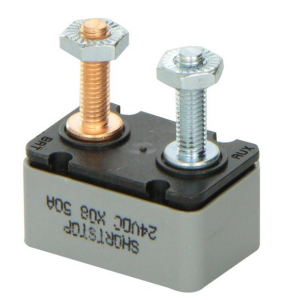
What may influence your voltage decision more than anything is the voltage of the trolling motor you plan on using. Mine happened to be a 24-volt, so we opted to keep the lights at the same voltage. On a side note, I had a weird humming/harmonic at 12-volts with my lights that went away when I switched over to 24-volt. That high pitched humming may have driven me crazy if I had to listen to it all night long.
Series vs. parallel, all your bowfishing lights should be wired in parallel to make sure each light is getting the correct input voltage. Forget what a parallel circuit looks like? Essentially each light is wired back to a terminal strip vs. a wire being ran from light to light (think old Christmas tree lights, where one bulb dies taking out the rest of the string). While parallel wiring requires a bit more wire it ensures all your devices have the same input voltage and you don’t have a reduced voltage as electricity flows through the circuit.
Another thing that’s worth mentioning, I finished all my electrical connections with marine grade shrink wrap, which you can find at Harbor Freight or online. This stuff is great. The inside of the tubing is essentially coated with hot glue (I don’t really know what the material is) but when you hit the shrink wrap with your heat gun you’ll see the glue type material being pressed out from the tubing ensuring a water tight connection. I’m also from the school of thought that if it’s worth doing, it’s worth doing right. So while you could twist all your wires together and hope for the best. I’d rather spend a bit more time upfront to make sure I’m fishing vs. troubleshooting electrical gremlins.
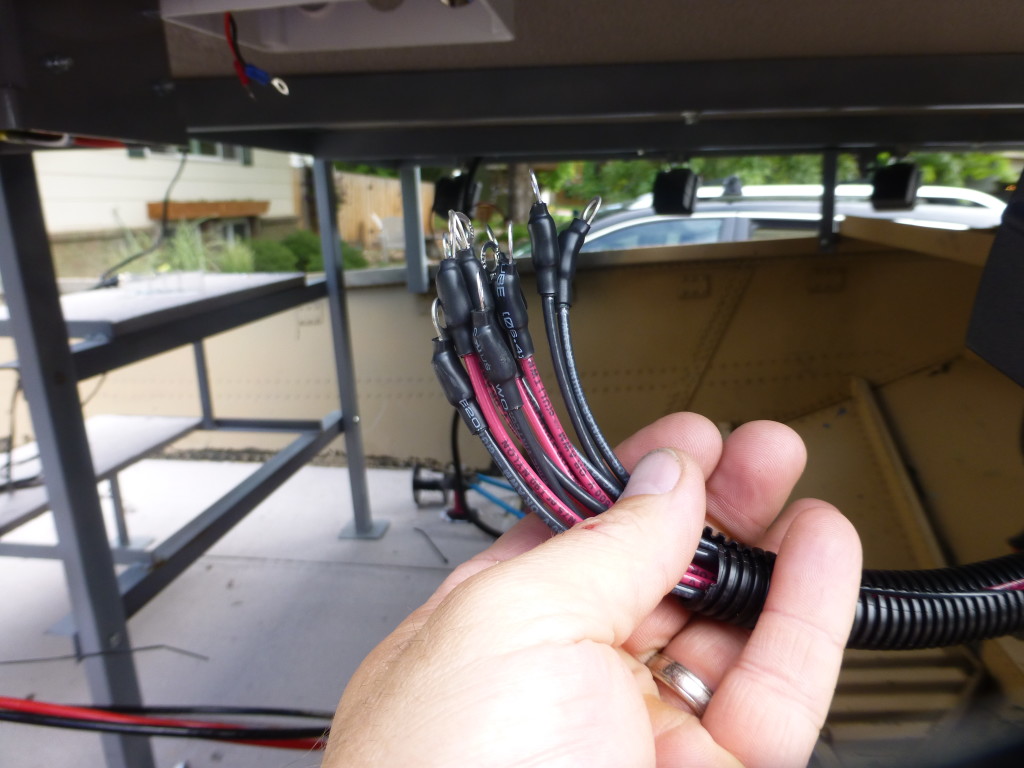
Something you’ll also want to think about is how you’ll control your lights/power. My trolling motor has voltage anytime the batteries are hooked up. Then I created two separate circuits, one for my bowfishing lights, and the second for my bow/stern and inboard deck lights. After our first trip out I learned and would recommend utilizing some type of low voltage LED lighting to illuminate your shooting deck and walkways inside the boat considering there’s a ton of junk that tends to accumulate during the trip and it’s nice to be able to see what you’re doing. And finally more as an afterthought I added a 12-volt cigarette lighter outlet. Very glad I did this as we’ve already used it to plug in a 12-volt spotlight and phone charger.
Generator/Convertor
The decision to run a convertor/generator will depend on how many lights (and wattage) you decided to go with and how they’re wired, and if you plan on fishing all night vs. a couple hours at a time. I’m still in the market for my convertor so I can’t offer much insight here but I will be referenceing this resource from the folks at Bowfishing County on generator and converter selection – How to Choose the Right Generator
Luckily I already have a Honda EU2000 handy for general camping, otherwise a generator can represent a pretty substantial cost to the project.
Summary
Please be sure to take your time with all your wiring and always have the proper safety items on-board in the event of a fire. Namely a fire extinguisher and flotation devices (both life jackets and a type IV Throwable) and your sound producing device. Remember you’re essentially constructing a floating power station sitting right next to your outboard gas tank, be smart when working on wiring and safe while on the water!!
I’m very excited that I finally took the time to make this project happen and I’m looking forward to spending countless hours with family and friends harassing the local marine life. I didn’t realize what I was missing out on until climbing up on the deck for the first time… I felt like a kid at Christmas! On a side note I was amazed at the amount of wildlife out at night and how curious many of the local birds (pelicans and cormorants) came to check out the lit-up crazy floating power station on the lake, it really was a cool experience!
‘Til next time…

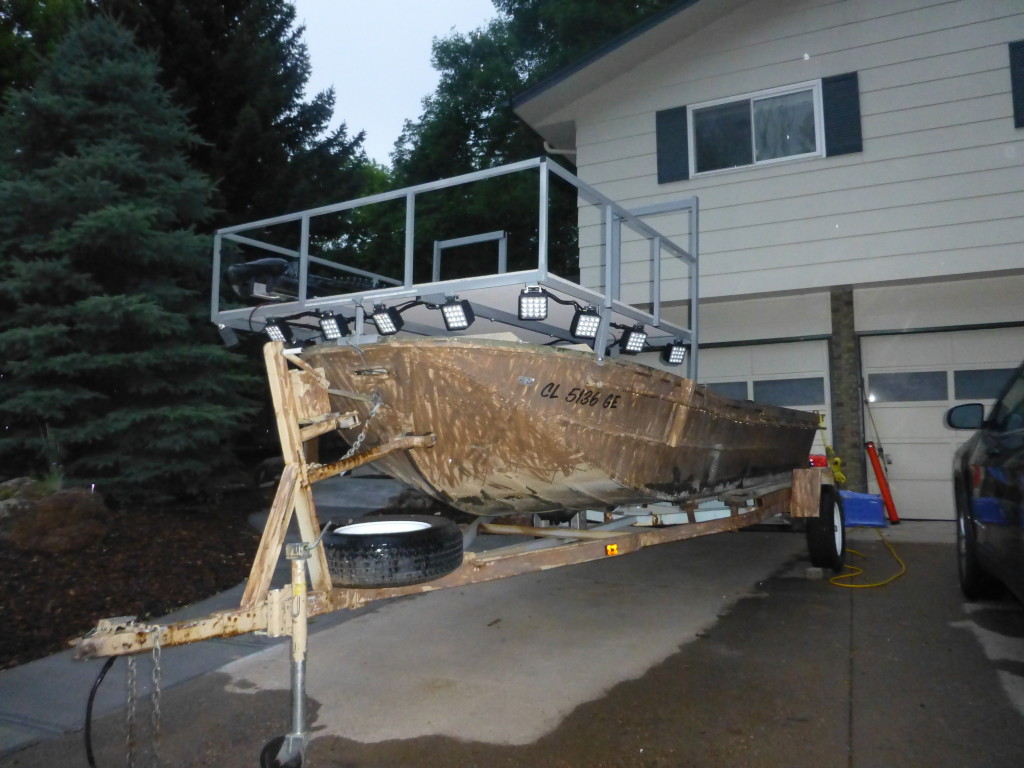

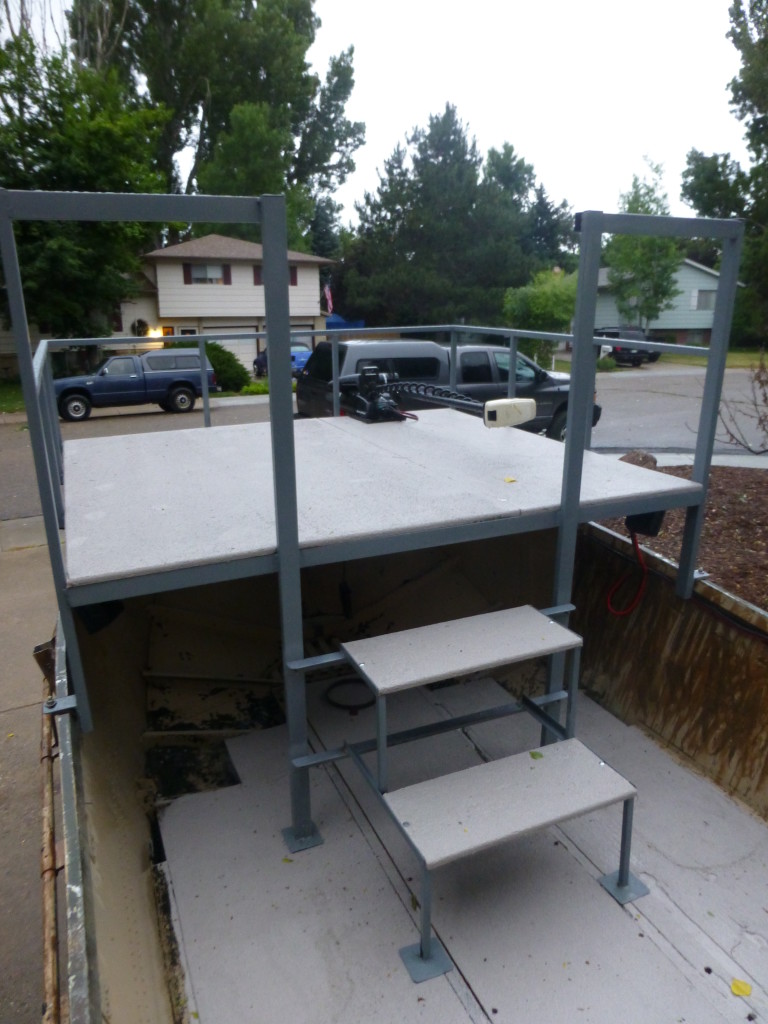
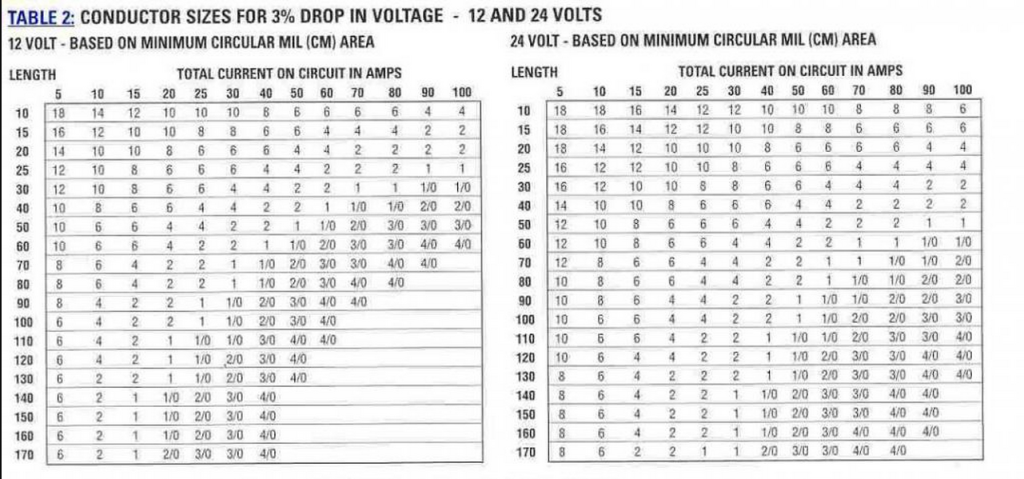
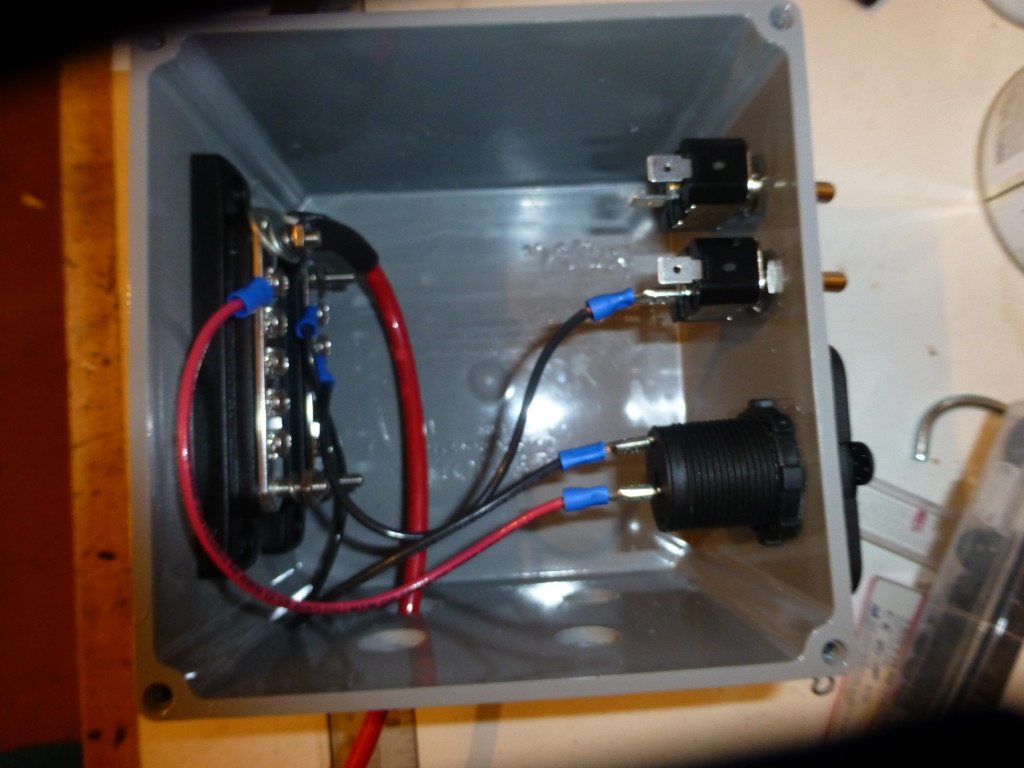
Jake Frankhouser
Now that’s an article and that is quite the bow boat. Very useful info. Looks like fun.
len
Nice job guys! You should bring it the Missouri River and try your skills at hitting the Asian Carp in mid air.
Troy
Any chance you could send a picture of how you set up the batterys? I want to totaly copy the way ypu set up your lights could you maybe send a drawing out how you set the whole thing up?
Matt
Sorry Franklin, my only recommendation would be to find a boot that’s comfortable for YOU. With the distance you’re traveling I’d recommend something with a stiffer footbed vs anything too skimpy (trail running shoe). Also, make sure to treat with some type of waterproofing product before heading out. Hope this helps.